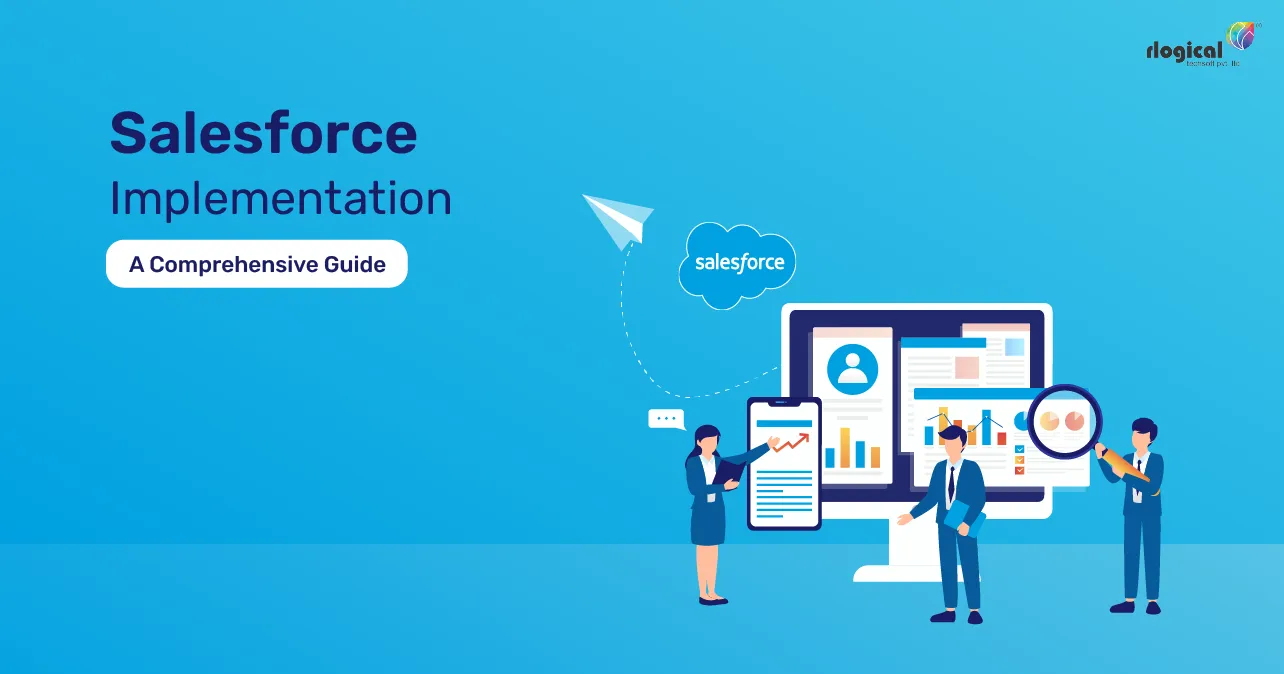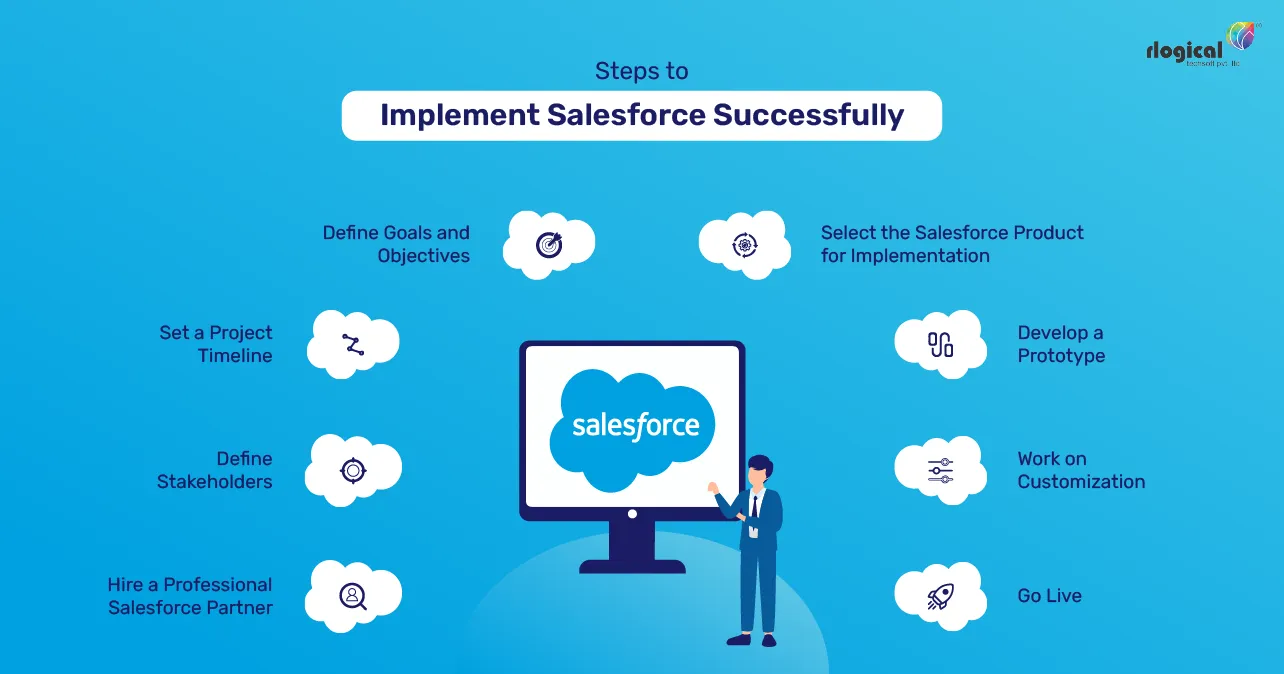
Salesforce is one of the powerful CRM tools that allow businesses to connect with clients better and streamline operations. Irrespective of your industry, this CRM tool plays a pivotal role in making your business stand out in the competitive era. Especially when your business involves a huge customer base, the need for Salesforce cannot be overlooked.
Salesforce allows organizations to identify new opportunities, manage customers’ data, and enhance communications. It enables companies to effectively achieve customer success. Moreover, it helps automate several business processes, allowing companies to save more time. With Salesforce, it becomes easy to keep track of all important information on a single platform. It allows for enhancing the efficiency and accuracy of the business processes.
However, when it comes to Salesforce implementation, it is not an easy task. If you are wondering how to successfully implement Salesforce, here are the steps to help.
Steps to Implement Salesforce Successfully

1. Hire a Professional Salesforce Partner
The first step in Salesforce implementation is hiring a Salesforce partner. When it comes to the implementation of Salesforce, there are two options. Either you can do it yourself or hire a partner. To save additional expenses, you might think of doing it yourself.
However, it is not a recommended option. Handling the Salesforce implementation in-house can have several negative outcomes. You may underestimate your projects due to a lack of experience and expertise. It might even result in slowing down your business productivity.
To avoid such problems, it is always best to hire experts. The Salesforce partners bring expertise in the domain and can implement Salesforce per your business’s unique needs. It can bring more agility to your business. Moreover, with the knowledge of the best practices, the experts can implement Salesforce in the best possible way.
2. Define Stakeholders
Once you have hired a Salesforce partner, the next thing to do is define your stakeholders. You will have to identify the stakeholders interested in the Salesforce project. The key stakeholders of any Salesforce project include the decision-maker, project manager, and the business or end-users.
In this step, you also need to define the roles and responsibilities of the stakeholders. For instance, the decision-makers are responsible for deciding the budget and timeline of the project. The project manager keeps track of the project’s outcome and progress. The business or end users are responsible for using the system. They help in identifying potential issues and defining the success of the projects.
3. Set a Project Timeline
Setting a project timeline before Salesforce implementation is important. Before the implementation, decide on a start date and the completion date. Mark specific dates on the calendar to denote when the milestones are to be achieved. An estimated timeline can give you a clear picture of the complete implementation process. It will also provide an estimation of the period it will take to complete the project.
The project timeline can help your team members to stay on track. It will keep you and your team members on the same page. It will ensure that the project is progressing promptly.
4. Define Goals and Objectives
The next step is to define the specific goals and objectives you plan to achieve. Different businesses use Salesforce for different reasons. In this step, you need to identify your purpose for using the Salesforce platform. Maybe you want to increase your business’s sales or improve client support. Or, maybe you want to ensure integration of your CRM platforms. Identifying your goals and objectives can make the Salesforce implementation process easy.
5. Select the Salesforce Product for Implementation
Once you have identified your goals and objectives, the next step is to select the Salesforce product you want to implement. There are several Salesforce products available. So, you need to identify the specific product you wish to implement. Some widely used products are Salesforce Sales Cloud, Salesforce Commerce Cloud, and Salesforce Service Cloud. Based on the specific needs of your business, you can select the right Salesforce product to implement.
6. Develop a Prototype
The next step is to build a working prototype. You must build the preliminary design and architecture based on your goals and objectives. Test the prototype at different stages before developing the final model. This can help in identifying and correcting potential flaws.
7. Work on Customization
Once you are ready with the basic model, it is time to work on the customization requirements. Customization is all about adding more capabilities to the Salesforce platform. You can customize the platform based on your specific business requirements. You can customize everything from the homepage to the different page layouts to suit your end-users.
8. Go Live
After the essential customizations are done, your Salesforce CRM platform is completely ready to be launched. You can make it live and get the maximum benefits of the platform. Once it goes live, integrate it with your other systems. Also, migrate your existing data to this platform. Moreover, training your team to use the platform is also vital.
Conclusion
Salesforce has become the need of the hour for every business. Implementation of Salesforces may seem to be a challenging task. However, knowing the steps involved, it becomes relatively easy. Now that you know the steps to implement Salesforce, it is time to start. Implement Salesforces and enhance the operations of your business for better outcomes.
Jatin Panchal
Jatin Panchal is the Founder & Managing Director at Rlogical Techsoft Pvt. Ltd. For more than a decade, he has been fostering the organization's growth in the IT horizons. He has always bestowed personalized approaches on .NET, PHP, Flutter, and Full-Stack web development projects. From startups to large enterprises, he has empowered them to accomplish business goals. By delivering successful industry-driven solutions, he is encouraging the capability of AI, ML, blockchain, and IoT into custom websites and hybrid mobile applications.
Related Blog
- No Related Blog.
Categories
- All
- AI Development Services
- Amazon Web Services (AWS)
- ASP.Net Development
- Azure Web App
- Big Data Analytic
- Customize
- Digital Marketing
- Drupal Development
- E-commerce web development
- Education Mobile App Development
- Enterprise Application
- Event Management App Development
- Fintech
- Fitness App Development
- Food Delievery
- Front-End Development
- Grocery App Development
- Healthcare App Development
- Hire Dedicated Developers
- Hotel Booking App
- IT Industry
- JavaScript Development
- Mobile App Development
- On Demand App Development
- On Demand Healthcare App Development
- PHP Development
- POS Software Development
- Real Estate Mobile App Development
- Retail Business App Development
- Salesforce
- Social Media Development
- Software Development
- Technology
- Transportation App Development
- UI/UX Design
- Web Design
- Web Development
- Web Services
- Web/Data Scraping Services
- WordPress




 Jatin Panchal in Salesforce
Jatin Panchal in Salesforce 





